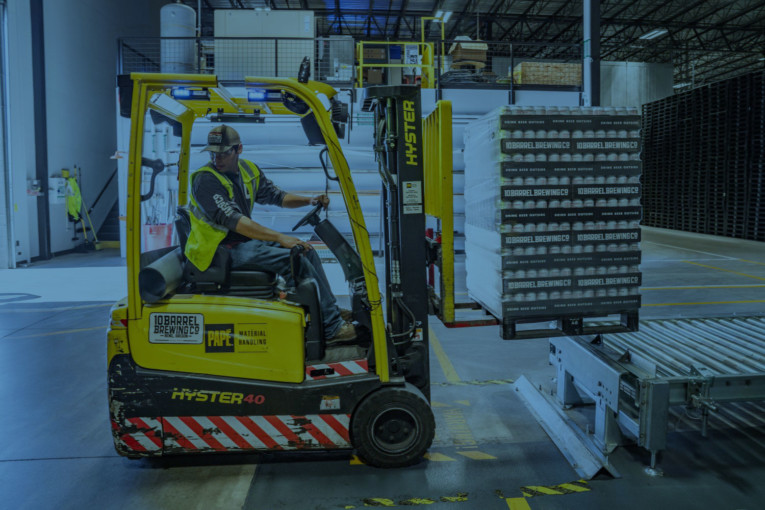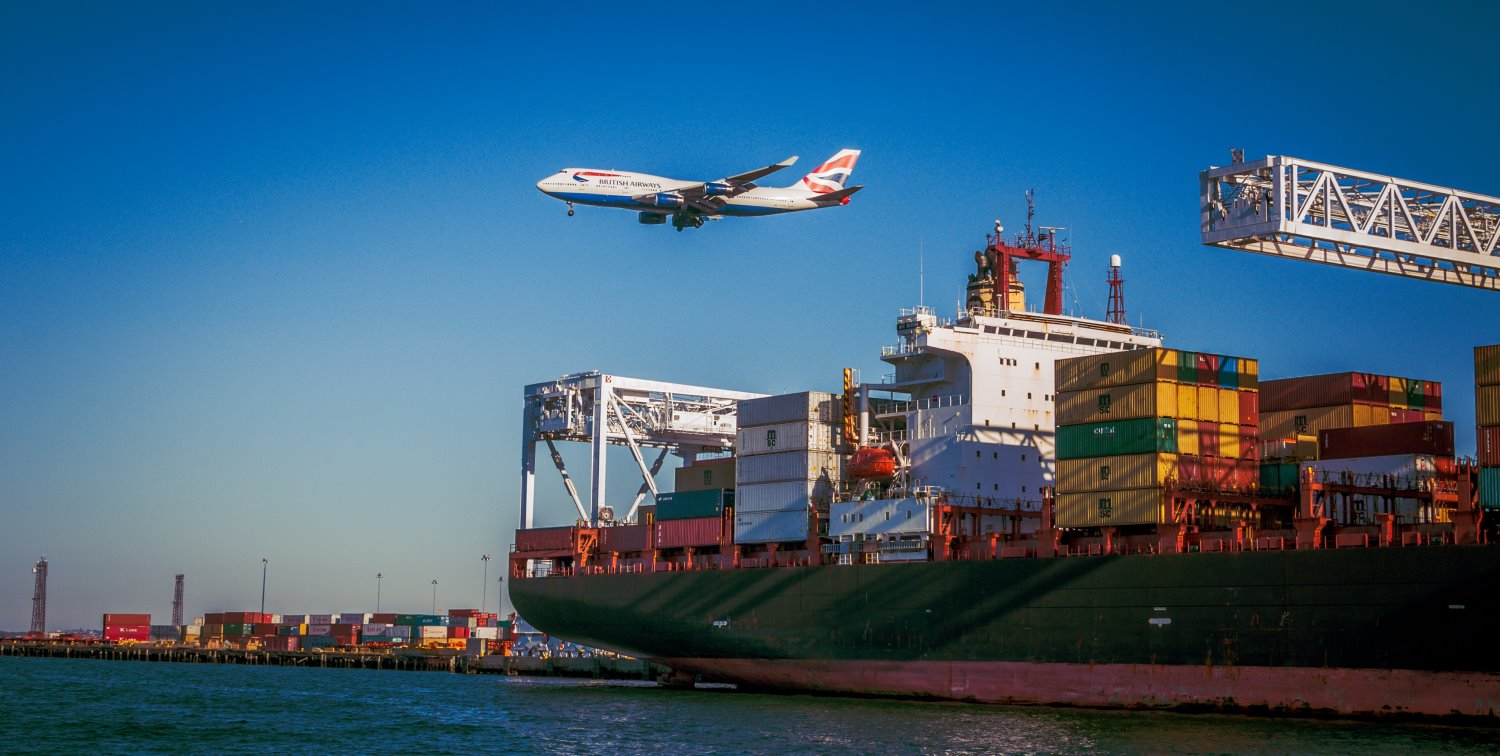In the modern retail landscape, it’s hard to imagine a time when shipping was a luxury exclusive to the enterprise. Over the past four decades, the transportation and logistics industry has gone through remarkable changes to allow just about any business the ability to ship goods to their customers in both a timely and affordable manner.
As a result, a vast majority of retail businesses have chosen to outsource important processes of their business – like supply chain management – to companies that solely provide logistics services. According to a 2017 report by Armstrong & Associates, companies using third-party logistics services include 90 percent of Fortune 500 companies.
In this article, we’ll take a closer look at the history of third-party logistics to see how the industry has evolved in the last 40 years and where it’s at today. Before we begin, let’s quickly go over what third-party logistics are and how companies can benefit from their services.
What is Third Party Logistics?
In the context of logistics and supply chain management, a company’s use of third-party businesses to outsource a part (or all) or their distribution and fulfillment services is called third-party logistics (or 3PL for short).
3PL providers are independent companies that provide single or multiple logistics services to companies that would like to outsource selected activities in their logistics and supply chain management process. Although 3PL providers don’t hold any ownership of the product they’re distributing, they are legally bound by contract to perform the logistics activities requested by the purchasing company.
“[A third party logistics provider is] a person who solely receives, holds, or otherwise transports a consumer product in the ordinary course of business but who does not take title to the product.” – HR 4040
Growing companies that struggle with logistics and supply chain management activities – such as inventory management, order processing, transportation operations, fulfillment operations, and warehousing – enlist the help of a 3PL provider to help their operations flow smoothly.
For instance, companies that experience variable sales volumes throughout the year or have seasonal fluctuations (like Black Friday sales or companies that sell sunscreen products) can benefit from the flexibility 3PL providers offer.
Similarly, companies that lack warehousing and distribution resources and expertise might outsource those activities to an established 3PL provider. This allows them to focus on core competencies and drive significant cost savings.
A Brief History of Third Party Logistics
Less than 40 years ago, the functions that make up the 3PL industry operated autonomously. Companies that shipped goods managed logistics and supply chain management activities internally. But there were a few key events that shaped the third party logistics industry into what it is today.
Let’s explore.
The 1980s: How It All Began
The deregulation of the trucking industry via the Motor Carrier Act of 1980 resulted in an increase in the number of trucking carriers in the United States. Companies that used to provide warehousing services exclusively started to expand their footprint in the whole supply chain and emerged as freight movers.
The rise in the number of companies providing both storage and transport services – and the advent of information technology – created space for third-party logistics companies. These companies essentially took the heavy lifting out of supply chain management from manufacturing businesses.
The increase in the number of companies using third-party logistics services correlates directly with the rise in the number of trucking carriers. The number of trucking carriers that used to be just 20,000 in 1980 has meteorically ballooned to 1.2 million today.
The 1990s: Going Global
The logistics management industry really started to take off in the 1990s as a result of the demand for these services in emerging economies. Countries like India and China – that had opened their economies for global businesses – began attracting the interest of companies looking to take advantage of cheap labor and local resources.
As a result, the demand for companies capable of streamlining complex supply chain processes skyrocketed – both domestically and globally. The increase in the number of companies providing third-party logistics services led to some companies specializing in niche markets – like frozen food products and construction industries – offering vehicles and facilities capable of handling the purchasing of a company’s specific needs.
Third-party logistics companies helped businesses penetrate international and domestic markets that could not have been otherwise economically viable.
The 2000s: Technological Advancements
The 2000s witnessed an explosive growth of the internet. Other technological innovations (like powerful computers and mobile devices) also gave third-party logistics companies the tools that enable them to streamline complex communications and supply chains.
The global demand for 3PLs capable of handling large-scale inventory management and transportation of goods, efficiently and on time, resulted in the development of advanced software and machines that helped businesses save money on fuel cost and overhead.
3PL providers were able to integrate complex logistics and supply chain management functions (such as inventory management, order processing, and transportation operations) into technology platforms to deliver supply chain visibility to their customers.
These technological advancements not only helped companies make improvements in their business processes but they also gave 3PLs more freedom to modernize their systems. As a result, they became more capable of adapting to their customers’ needs. This gave businesses more flexibility to spend their resources on improving their core competencies and saving time and money on developing and integrating advanced technological logistics systems.
Third Party Logistics Today
The rise and fall in demand of goods throughout the year requires companies to be flexible. So, outsourcing their supply chain activities to 3PLs who specialize in those functions improves efficiency and allows them to cut costs.
3PLs today help companies save money by giving them access to (otherwise costly and oftentimes proprietary) technological tools and helping them make better decisions for their business’ logistics and supply chain functions.
Offering Cost-Effective Solutions
In the early days, services offered by 3PL providers were available to bigger companies and enterprises. As the demand for these services increased over the years, more and more 3PL providers entered the market, and cost-effective solutions were made available to businesses of all sizes.
For instance, 3PL providers that worked with two or three purchasing customers in the past were able to increase their capacity while working with the same transportation and warehousing assets. Consequently, they lowered their prices and offered cost-effective solutions to smaller businesses that needed to outsource selected activities in their logistics and supply chain management process.
1PL vs 2PL vs 3PL vs 4PL vs 5PL
Logistics service providers can be classified into five different layers:
-
First party logistics (1PL) providers are companies that provide transportation of certain goods or use specific shipping methods to transport goods in a certain geographic area. Port operators and depot companies are good examples of 1PL providers.
-
Second party logistics (2PL) providers are companies that transport goods in a larger national geographical area than 1PL companies. They offer their own (and external) logistics resources including trucks and warehouses. Some examples of 2PL providers include parcel services, freight forwarders and ocean carriers.
-
Third party logistics (3PL) providers are quite similar to 2PLs with the key difference being that 3PLs offer additional value added services like warehousing and packaging in addition to being integrated into the customer’s system. This way, they’re informed about the expected workload in the near future rather than being on call.
-
Fourth party logistics (4PL) providers do not own transportation assets or warehouses. Instead, they have an allocative and integration function within the purchasing company’s supply chain. Simply put, 4PL providers work as intermediaries between purchasing companies and 3PL providers with a goal to help the purchasing company increase supply chain efficiency.
-
Fifth party logistics (5PL) providers help their customers implement the latest technologies in their supply chain activities. The main purpose of a 5PL service provider is to provide system oriented consulting and supply chain management services to purchasing companies.
On-Demand Transportation
3PLs specialize in offering services that are tailored to their customers’ specific needs. On-demand transportation is a growing niche market that offers 3PLs more monetary return than they would get from their regular services.
These services include full truckload (FTL), less-than truckload (LTL), direct and exclusive transport services, the Next Flight Out service, fast delivery, and expediting a delivery anywhere in the world.
On-demand transportation also lets 3PLs act as brokers between the companies and their customers. Broker 3PLs offer to sell unsold goods through their call center services and, in return, charge a high margin of around 15 percent on every sale made. These 3PLs don’t have the responsibility to sell all the goods, but this gives the occasional shipper opportunity to sell their goods conveniently.
Niching Down
Service providers who enter into niche business tend to become very good at what they do. The same goes for 3PL providers.
Niche 3PL providers can specialize in different ways. Some might choose to focus on the service offerings they’re best at while others might go for the geographical area that’s most convenient to their customers. However, many 3PLs niche down into the specific industry verticals with which their business processes best align.
These niche 3PL providers build solutions around higher value and better care for the commodities they store and ship. They’re able to use existing systems and processes to streamline procedures for their network of customers. And their customers can rest assured that the 3PL provider’s team has experience carrying out similar solutions for similar types of products. In addition, niche 3PL providers also have the advantage of being able to offer tailored solutions to their customers.
Offering specialized solutions within defined industry verticals makes it possible for niche 3PLs to embrace the idea of a partnership with their customers. Between their existing systems and specialized teams, they can cater to growing market demands and their customers’ ever-evolving needs.
The Future of 3PL
The 3PL industry is rapidly growing at a rate of 7.4 percent. With room to continue growing, the industry is successfully meeting the demands of growing companies by giving customers more control and visibility over their supply chains. Companies that enlist 3PL providers can focus on their own core competencies and grow their bottom line.
According to the Annual Third Party Logistics Study conducted by Penn State University and Penske Logistics, 3PLs have evolved from tactical service providers to collaborative partners that are eager to take on more accountability. These 3PL providers focus on improving data-driven decision making and offering solution-oriented logistics services to further enhance their customers’ supply chain functions.
Conclusion
Over the last 40 years, the 3PL industry has evolved into a necessary outsourcing option for companies that face challenges with operational efficiencies in logistics and supply chain management.
By offering services like digital storefront integration and online order fulfillment to warehousing and industrial kitting, 3PL providers can offer customers better visibility and more control over supply chain activities on a domestic and global scale.







